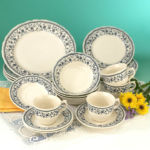Fixed Deposits (FDs) are a popular savings tool in India, appreciated for their stability and predictable returns. As low-risk investments offered by banks and Non-banking Financial Companies (NBFCs), FDs involve depositing a lump sum for a fixed tenure. In exchange, the depositor earns a fixed interest rate. The following sections provide a detailed overview of fixed deposits, explaining how they work and highlighting their key features and benefits.
What is a Fixed Deposit?
A Fixed Depositis a type of investment in which a lump sum amount is deposited with a bank or NBFC for a predetermined period. This period is referred to as the ‘tenure,’ which can range from 7 days to 10 years. During this tenure, the deposited amount earns a fixed interest rate, which does not change, irrespective of market conditions.
How Does a Fixed Deposit Work?
To open an FD, you select the investment amount and a tenure that aligns with your financial goals. The bank or NBFC then provides a fixed interest rate based on the tenure and deposit amount. Interest rates can vary depending on the issuer and prevailing economic conditions. At maturity, the institution returns the principal along with the accumulated interest.
For example, if you invest ₹1 Lakh in an FD at a 6% p.a. interest rate for 2 years, you will receive the principal plus interest at the end of the term. This straightforward process makes FDs a popular low-risk investment.
Features of Fixed Deposits
Fixed Interest Rates
One of the primary features of an FD is the fixed interest rate. Once the deposit is made, the interest rate remains constant throughout the tenure. This provides protection against interest rate fluctuations in the market.
Flexible Tenure
FDs offer flexible tenure options ranging from a few days to several years. You can choose a tenure based on your financial goals, whether short-term or long-term.
Interest Payout Options
FDs provide various interest payout options, allowing you to receive the interest monthly, quarterly, or at maturity. This flexibility makes FDs suitable for individuals who require regular income.
Premature Withdrawal
Many banks and NBFCs allow premature withdrawal of the FD. However, this usually comes with a penalty on the interest rate. It is advisable to understand the terms of premature withdrawal before investing.
Loan Against FD
You can avail of a loan against your FD, usually up to 90% of the FD amount. This feature provides liquidity in case of emergencies without needing to break the FD.
Taxation
Interest earned on an FD is subject to taxation. However, tax-saving FDs with a 5-year tenure provide deductions under Section 80C of the Income Tax Act, 1961. This feature makes them an attractive option for those aiming to reduce their tax liability while securing a fixed return.
Fixed Deposit Receipt Format
Upon opening an FD, the bank or NBFC issues a Fixed Deposit Receipt (FDR) as proof of the deposit. This receipt contains all the essential details of the FD, including:
- Name of the depositor
- Principal amount
- Interest rate
- Tenure of the deposit
- Maturity date and amount
- Interest payout option
- Terms related to premature withdrawal
The fixed deposit receipt is an important document. It serves as evidence of your investment and is required if you wish to prematurely withdraw the FD or take a loan against it. Therefore, it is advisable to keep the FDR in a safe place.
Types of Fixed Deposits
Standard Fixed Deposit
This is the most common type of FD, where the depositor receives a fixed interest rate for a chosen tenure. The principal and interest are paid out at maturity.
Tax-saving Fixed Deposit
Tax-saving FDs have a lock-in period of 5 years. They provide tax benefits under Section 80C of the Income Tax Act, 1961. However, premature withdrawal is not allowed in this type of FD.
Senior Citizens’ Fixed Deposit
Many banks and NBFCs offer higher interest rates on FDs for senior citizens. This provides a steady source of income for individuals post-retirement.
Cumulative Fixed Deposit
In a cumulative FD, the interest is compounded quarterly or annually and is paid out at maturity along with the principal amount. This option is suitable for those who do not require regular interest payouts.
Non-cumulative Fixed Deposit
In this type of FD, the interest is paid out regularly, either monthly, quarterly, half-yearly, or annually. This option is beneficial for individuals looking for a regular income stream.
How to Open a Fixed Deposit
Opening an FD is a straightforward process. It can be done online through the bank or NBFC’s website or by visiting a branch. Here are the general steps:
- Select a bank or NBFC offering a favourable interest rate and tenure that suits your financial needs
- Decide on the amount you wish to deposit and the tenure of the FD
- Choose how you would like to receive the interest— at regular intervals or at maturity
- Submit the required documents, such as identity proof and address proof, and complete the application process
- Once the FD is opened, you will receive a Fixed Deposit Receipt (FDR) as proof of your investment
Conclusion
Fixed deposits are a low-risk and reliable savings tool suitable for individuals seeking stable returns. They offer fixed interest rates and flexible tenure options, making them versatile for various financial goals. While the returns may be lower compared to other investment options, the predictability and safety of FDs make them a favoured choice for many. Understanding the features, benefits, and limitations of FDs can help you make informed decisions about incorporating this investment tool into your financial plan.



